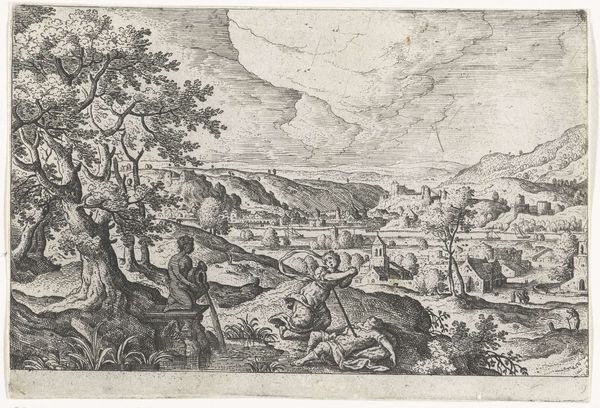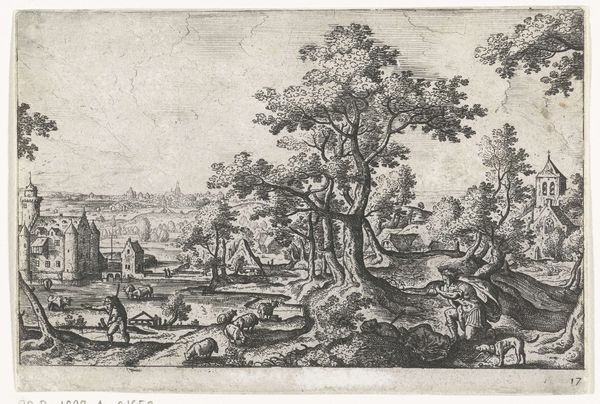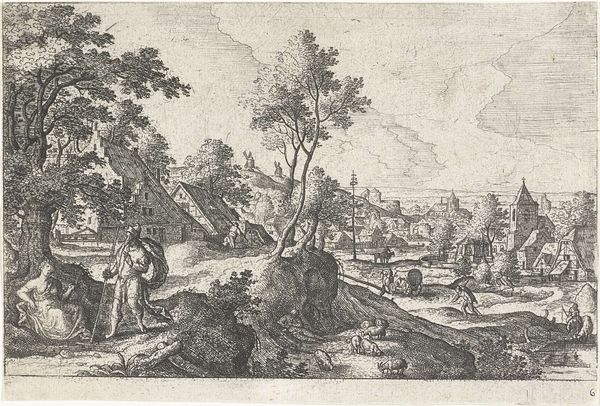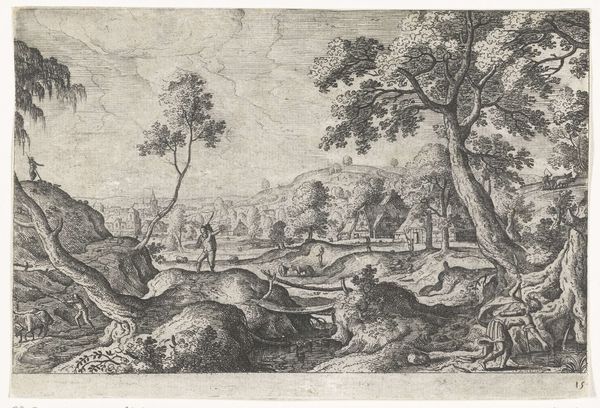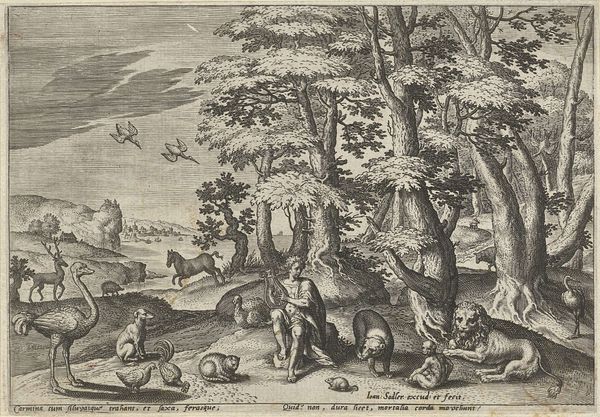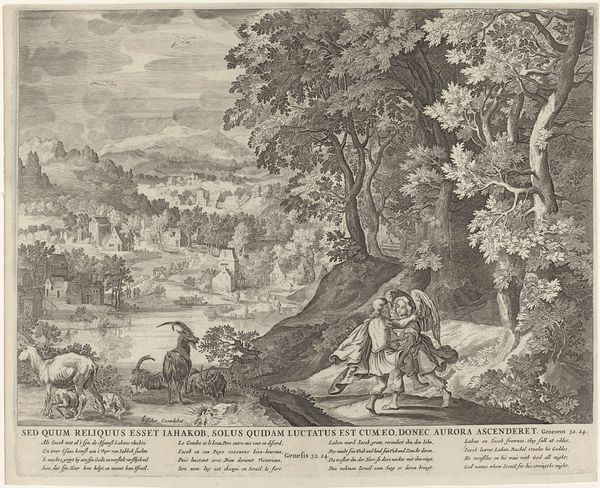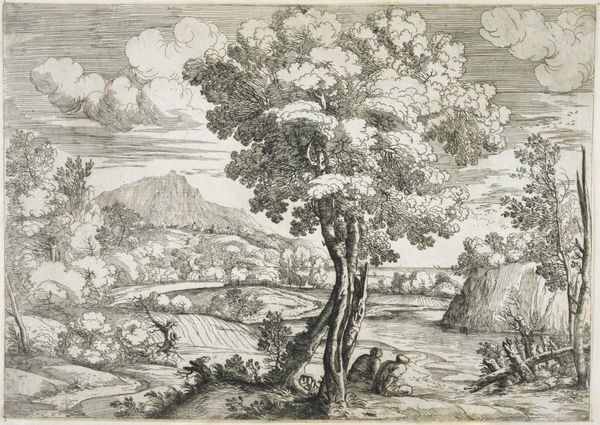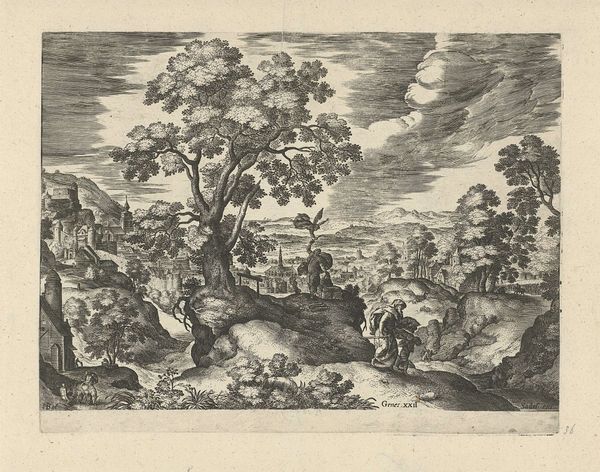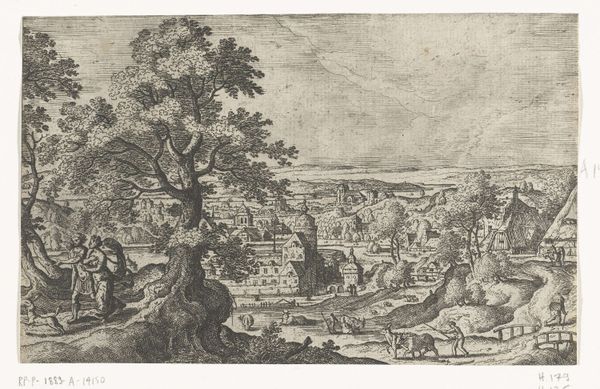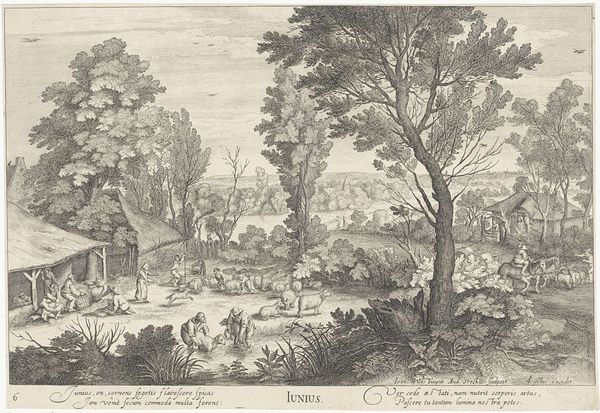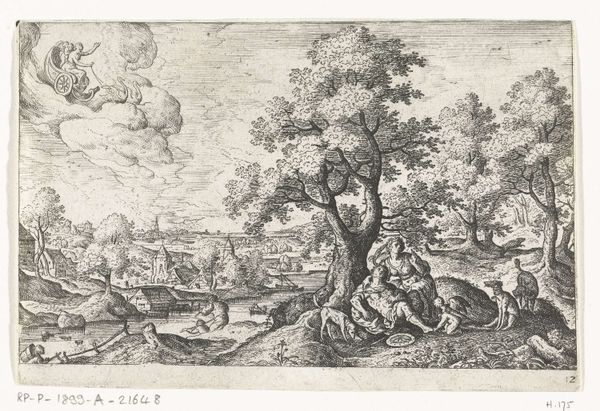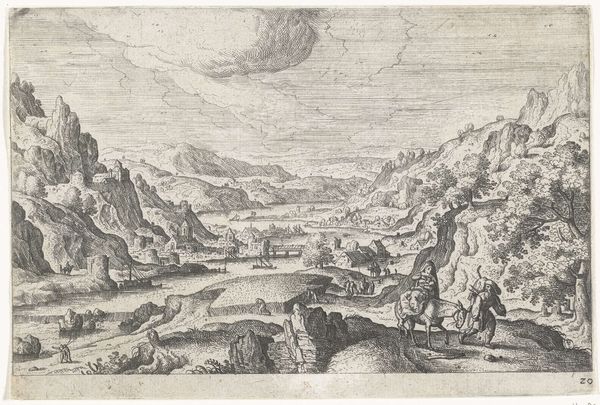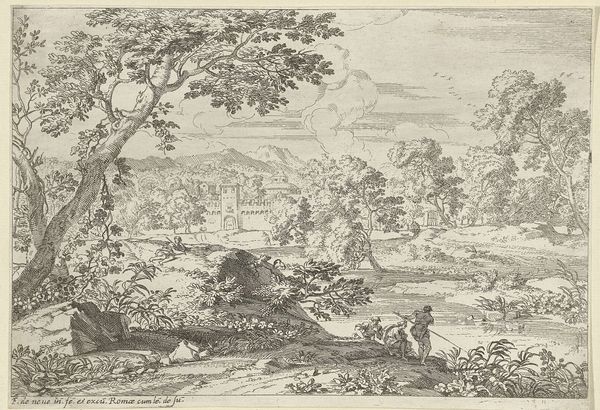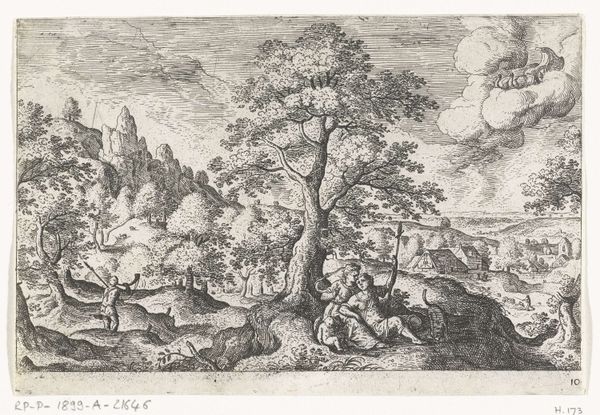
print, etching, engraving
# print
#
etching
#
old engraving style
#
landscape
#
mannerism
#
personal sketchbook
#
genre-painting
#
engraving
Dimensions: height 220 mm, width 293 mm
Copyright: Rijks Museum: Open Domain
Curator: This is "Zomer," or "Summer," an engraving and etching made around 1580 by Johann Sadeler I. It's currently held here at the Rijksmuseum. Editor: It strikes me as a whirlwind of activity—a real composite of rural life. The landscape feels both meticulously rendered and brimming with barely contained energy. Curator: Indeed. Let's consider the artistic strategies Sadeler employs. The composition guides the viewer's eye through various activities, creating a layered visual experience characteristic of Mannerism. It also borrows elements from genre painting, representing everyday life and labor. The various materials—etching and engraving—undoubtedly influence the graphic quality, offering finely detailed scenes alongside broader washes. Editor: It's intriguing how Sadeler merges these seemingly disparate elements into a unified vision. The constellation signs float above a vibrant rural scene where agriculture and hunting intermingle. You get the impression of a bountiful harvest hinging on diligent work, both in the fields and forests. It highlights, perhaps, society's relationship to production and resource extraction. Curator: Absolutely. Consider the woman in the foreground: an allegory of Summer surrounded by produce. The labor of the peasant class yields the crops. This image served multiple purposes – a display of artistic prowess and an economic record, indicating how life was supported through agrarian work during this period. Note that his workshop was a collaborative effort involving engravers and printers, all engaged in producing affordable images. Editor: The tonal range, from deep blacks to delicate grays, enhances depth. It draws you into the miniature world created. Despite being static, the image evokes a distinct feeling. And notice how the figure of summer contrasts—serene and ample amidst a scene of so much constant labor? It's quite symbolic. Curator: Right, which makes the connection to seasonal availability obvious. But let us consider further the circumstances surrounding its creation and distribution: a growing art market facilitating widespread exchange, increased urbanization resulting in demand for these detailed glimpses into nature... Editor: Thinking about all these interrelations of process and meaning, I must say this deep dive offers a fresh look beyond conventional interpretations. I now observe an interplay between artistic intention and socio-economic structures. Curator: Precisely. With all these perspectives, this piece prompts contemplation regarding not only visual structure but its implications within a broad historical tapestry.
Comments
No comments
Be the first to comment and join the conversation on the ultimate creative platform.
